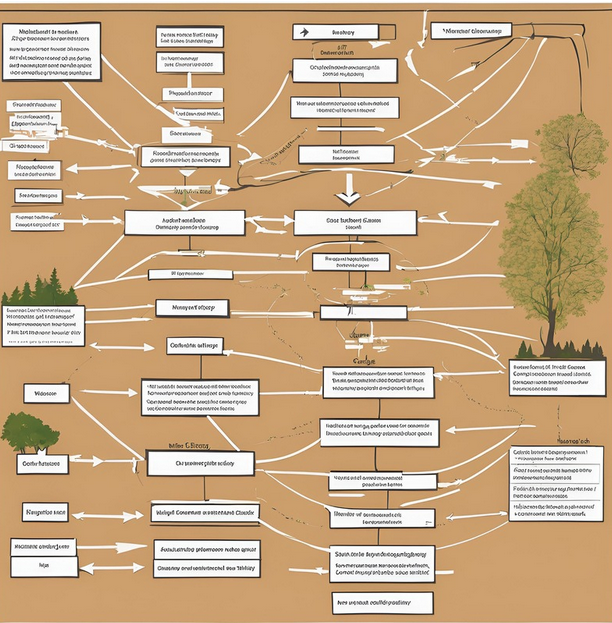Success as what we Achieve, not what we Do. Inputs vs. Outcomes.

I’ve been beating the same drum for awhile in my non-profit circles about the need for non-profits to shift organizational mindsets from “what we do” to “what we achieve.” When I reflect on the past few decades in my roles as director of a nature center, co-founder of a development non-profit, board member / advisor to other organizations, and so on, I see my own progression of thinking on this. In the initial years I thought enrollment of kids in a nature day camp or awarding scholarships in Kenya illustrated that the respective organization was achieving what it was supposed to achieve. In hindsight, that was short-sighted.
Today, I see an organization’s programs as a strategy, but not the end game. Success, for example, isn’t 120 kids enrolled in a summer day camp about nature, or 50 scholarships awarded. Success is those 120 kids feeling connected to nature for the rest of their lives, and those 50 students living with less vulnerability to poverty. However, if the mindset is defining success by activities, then we congratulate ourselves and move on after 120 campers enroll and 50 students attend school. Those are interim benchmarks of progression toward success, but not end-game success.
I’m not breaking new ground or creating new paradigms with this thinking; the thought leaders in the non-profit and social impact sectors have been advocating for this for years; but like any paradigm shift, it takes enough individual champions and early adopters for it to really get a foothold within a sector, and I think that’s where we’re at now.
Early in my career, logic models were common in preparing grants and shaping programs. I recall several logic model collaboration sessions with colleagues and partners that felt horribly academic and over populated with boxes and arrows; the more arrows the better, because it demonstrated -- allegedly -- competence and comfort with complexity, even if the diagram became impossible to follow.
Logic models start with program activities and force the thinking about how or if those activities will eventually lead to desired outcomes. They are almost like quality control on ourselves, to make sure a path exists between the stuff we want to do in non-profits and the outcomes we want to achieve. For example, if 120 kids spend a week of summer exploring and learning about nature (A), and our desired outcome for those kids is a connection to nature (Z), a logic model maps out a pathway for A to lead to Z. It’s a straight-forward concept, though my experience is it can get a little out of hand.
A limit of logic models, or at least the ones I remember co-creating, is the activities typically seemed locked in and as a result, the conversations often felt like forcing a path between A and Z. If a path didn’t exist, I’m not sure we would have detected it, and instead, would have forced it.
Today, logic models seemed to have given way to theories of change. In concept, they’re similar, and sometimes this stuff needs to be adapted, repackaged and renamed to gain traction again. What I like about theories of change is they are anchored in the desired outcomes – what we hope to achieve – and are more inviting to innovation. For example, if a desired outcome of connection to nature is a starting point for designing a program, the next steps are to work backwards and consider all of the possibilities for how to create a connection to nature. Research suggests that positive experiences in nature lead to nature connection, and that positive experiences in nature often include unstructured and unconstrained time to explore, discover and imagine. Eventually we work backwards enough to see several possibilities for what a possible program could look like. We might decide on summer day camps as one program, but if we started the process with summer day camps, we would be likely to overlook other program options.

That example isn’t hypothetical. In the first years as a nature center director, we did the usual environmental education activities, and I framed our organizational thinking around ‘what we do.’ Almost none of our programs included unstructured time for kids to explore and imagine, yet our desired outcome was kids experiencing a connection to nature. If we focus on outcomes and not actions, we more clearly saw gaps and limits in our programs, and as a result, built time into programs for kids to run free and follow their curiosities about nature, loosened up on our “no off-trail” rules, and made similar adjustments.
What are we trying to achieve?” is the question I annoyingly ask again and again in board and staff meetings with the various organizations with which I’m involved. That’s what an outcomes-base mindset does to you, in a (mostly) good way aside from colleagues getting tired of me asking the same predictable question. It encourages every decision and expenditure to be run through the filter of whether it contributes to a desired outcome.
I don’t recall the source, but somewhere I read that non-profits need to drop their “pizza slice” mindset. The analogy went something like this: when we order a pizza slice, success is usually defined simply by whether we received the pizza slice. It’s a give/get transaction and once the slice is received, that's the end of the transaction and our thinking about it.
Nonprofits aren’t in the business of metaphorical pizza slices; our success, ultimately, is beyond whether we delivered the pizza slice of services and programs, and whether that pizza slice led to something better. We are successful when our services and programs lead to outcomes and impacts that create positive change for people and society.
Cover image AI generated via Canva Magic Media.